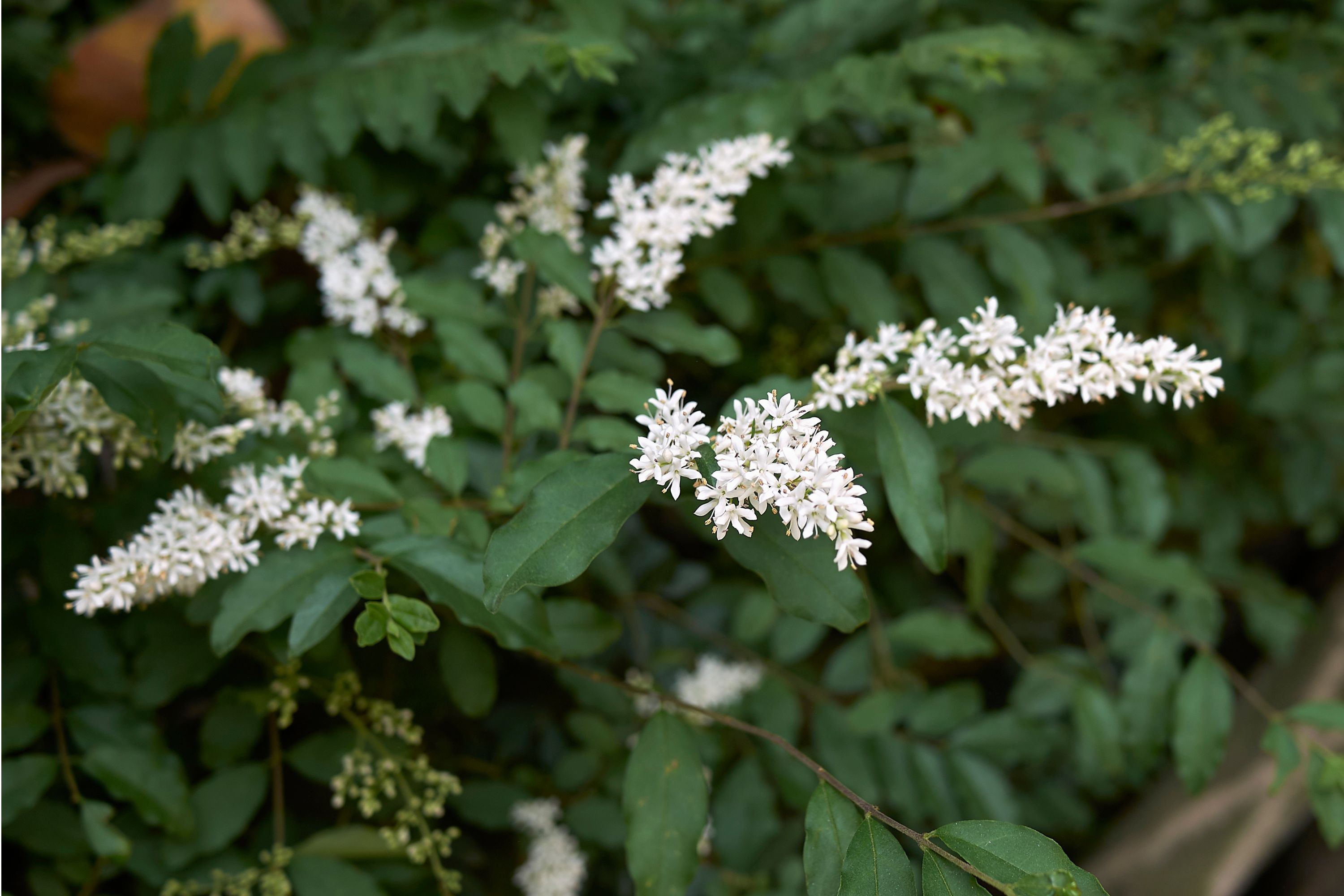Common privet
(Ligustrum vulgare)

Description
Ligustrum vulgare, commonly known as common privet or European privet, is a species of deciduous or semi-evergreen shrub that belongs to the Oleaceae family. It is native to Europe and parts of Asia, but has been introduced and naturalized in many other regions around the world. This plant is commonly grown as a hedge or screen, but it also has several other uses, including medicinal, culinary, and ornamental. Description Ligustrum vulgare is a shrub that can grow up to 6 meters (20 feet) tall and 4 meters (13 feet) wide, but it is usually smaller when grown as a hedge or screen. The plant has a dense, bushy growth habit and produces long, thin branches that are covered in glossy, dark green leaves. The leaves are opposite, oval-shaped, and measure 3-6 cm (1.2-2.4 inches) in length. They have a leathery texture and a smooth margin, and they are arranged in pairs along the stem. Ligustrum vulgare blooms in late spring or early summer, producing clusters of small, white, fragrant flowers that are about 0.5 cm (0.2 inches) in diameter. The flowers are hermaphroditic, meaning that they contain both male and female reproductive structures. They are followed by small, black, berry-like fruits that measure 0.5-1 cm (0.2-0.4 inches) in diameter. The fruits are edible, but they are not commonly consumed due to their bitter taste. Distribution and Habitat Ligustrum vulgare is native to Europe and parts of Asia, including the Caucasus and western Siberia. It has been introduced and naturalized in many other regions around the world, including North America, Australia, New Zealand, and South Africa. In its native range, the plant grows in a variety of habitats, including woodlands, hedgerows, and scrublands. It prefers well-drained soils and can tolerate both full sun and partial shade. Uses Ligustrum vulgare has several uses, including medicinal, culinary, and ornamental. Medicinal Uses: The leaves and bark of Ligustrum vulgare contain several compounds that have been used in traditional medicine to treat a variety of ailments. For example, the plant has been used as a diuretic, a laxative, and a remedy for coughs, colds, and other respiratory conditions. It has also been used to treat skin disorders, such as eczema and psoriasis. Culinary Uses: The fruits of Ligustrum vulgare are edible, but they are not commonly consumed due to their bitter taste. However, they have been used to make a type of liqueur called privet wine. The leaves of the plant have also been used to flavor tea and as a substitute for black tea. Ornamental Uses: Ligustrum vulgare is commonly grown as a hedge or screen due to its dense growth habit and ability to tolerate pruning. It is also sometimes grown as a specimen plant in gardens and parks. Cultivation Ligustrum vulgare is a hardy plant that is easy to grow and maintain. It prefers well-drained soils and can tolerate both full sun and partial shade. The plant can be propagated by seed, cuttings, or layering. To propagate by seed, collect the berries in autumn and remove the seeds from the pulp. Plant the seeds in a well-drained seed compost and keep them moist until they germinate. To propagate by cuttings, take softwood cuttings in late spring or early summer and root them in a propagator.
Taxonomic tree:







